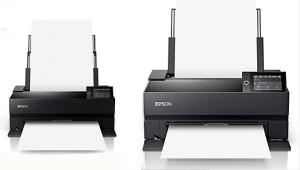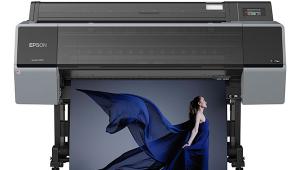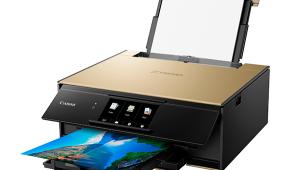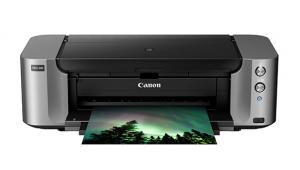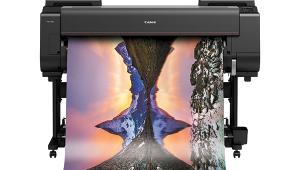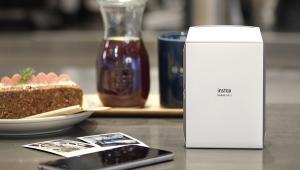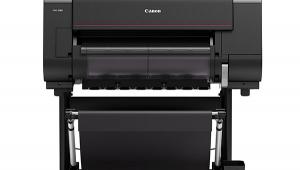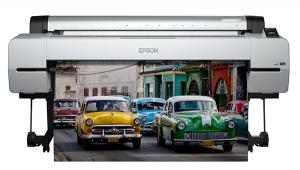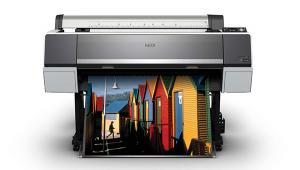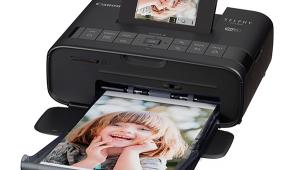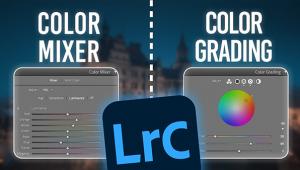Epson K3 Inks & Printers
Epson has unveiled a new line of printers employing an eight-color pigment-based UltraChrome K3 inkset system. All of the new machines employ the same K3 inks, print heads, and driver software, but differ in size, cartridge size, and color calibration technology.
The suffix K3 refers to the fact that a full three--not merely two--black pigmented inks are ejected simultaneously: light black, the entirely new light, light black plus either matte black or photo black. Either of the latter can be user-selected to match the paper in use. (The other five inks are of the same colors as in the UltraChrome inkset.) The new machines offer another significant feature: High-gloss Microcrystal Encapsulation Technology for claimed superior scratch resistance and color stability immediately after printing.

The combination is said to provide several valuable benefits, the most noteworthy being the reduced metamerism (color shift under various types of lighting), bronzing (a brown metallic effect in shadow areas), and gloss differential (varying levels of glossiness). These factors were common to some extent with many prints made on glossy papers with other machines using conventional pigmented inks. The bronzing and gloss differential problems were solved with the addition of a Gloss Optimizer employed by the Stylus Photo R800 and the new R1800. The new inks and technology, however, are a more suitable solution for high-end and professional eight-color printers.
Note: At the time of this writing, full accelerated testing had not yet been completed on prints made with the K3 inks, but Wilhelm Imaging Research believes that they will be similar in lightfastness to prints made with the earlier UltraChrome inks. The most recent tests produced remarkable Print Permanence Ratings such as 108 years for color prints on Epson UltraSmooth Fine Art paper and 205 years for black and white prints.
Under professional display conditions, using UVPlexglass (with 70 percent UV protection), the ratings increase to 175 years and 300 years, respectively. Shorter and longer lightfast ratings apply to prints made on other media with UltraChrome or K3 inks, as listed at www.wilhelm-research.com.
Other claimed enhancements include substantially higher speed, wider color gamut, superior results on glossy papers, and more sophisticated color management software. In black and white printing, benefits include an exceptional gray balance, impressive mid tones and highlights as well as a smoother tonal scale. An entirely new driver option, advanced black and white print mode, is also available, employing only the three black inks to make monochrome outputs. This feature produces prints without any apparent color crossover or color cast although toning (such as sepia) can be applied in the driver software, if desired. It is noteworthy that the black and white workflow proposed by Epson is quite new and unusual in that it asks the printmaker to rely on the Epson, rather than application drivers. It remains to be seen whether this is effective as Epson claims, something we will be sure to test.
The monochrome prints shown by Epson--made with conventional printing and with the advanced black and white print mode--were absolutely stunning, truly accurate without a magenta or warm color cast. They matched the best silver-halide prints that I had seen in the past. This improvement was partly due to a remarkable increase in maximum density from 2.1 to 2.3, thanks to the new inkset. Here are the new printers:
Epson Stylus Photo R2400: The replacement for Epson's 2200 model, this tabloid-format printer (with maximum optimized resolution of 5760x1440dpi) can make borderless prints as large as 13x19" on sheet paper or up to 13x44" when using roll paper. Designed for serious photo enthusiasts and professionals who do not need larger prints, it features four paper paths: sheet, roll, manual, plus roll and straight through for media as thick as 1.3mm. This machine is also faster than its predecessor, capable of generating an 11x14" matte photo in under two minutes. The R2400 kit includes nine UltraChrome K3 ink cartridges, new Epson RAW Print software, four nik Pro 2.0 plug-in filters, and an extensive "color management solution." (Street price: $849.)
Epson Stylus Pro 4800: Replacing the popular Stylus Pro 4000, this machine (with 2880x1440dpi maximum resolution) was designed for media handling up to 17" wide for 17x22" prints from sheets; longer prints can be made when using roll paper. The Stylus Pro 4800 accepts high-capacity 110ml and 220ml ink cartridges and its features include Variable Droplet Micro Piezo DX3 technology, automatic head alignment and cleaning systems, Epson Colormetric Calibration Technology, as well as the Epson Print Job Information system. (Street price: $1995.)
Large Format Printers: Two additional K3 models will be available later this year, at substantially higher prices, primarily targeting studios, galleries, and other professionals. Their features are similar to those of the Pro 4800. The Epson Stylus Pro 7800 ($2995) accepts media as wide as 24" and employs a new pressurized ink cartridge delivery technology in 110ml or 220ml cartridges. The Pro 9800 ($4995) with media handling up to 44" wide is virtually identical in most other respects to the Pro 7800. Professionals will want to review the additional information and full specifications available in the Professional Graphics section on the Epson website at: www.epson.com.
For more information, contact Epson America, Inc., 3840 Kilroy Airport Way, Long Beach, CA 90806; (800) 463-7766, (562) 981-3840.
- Log in or register to post comments
